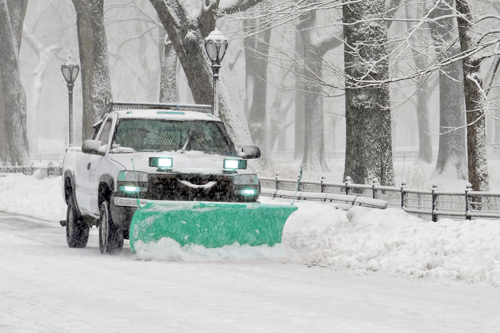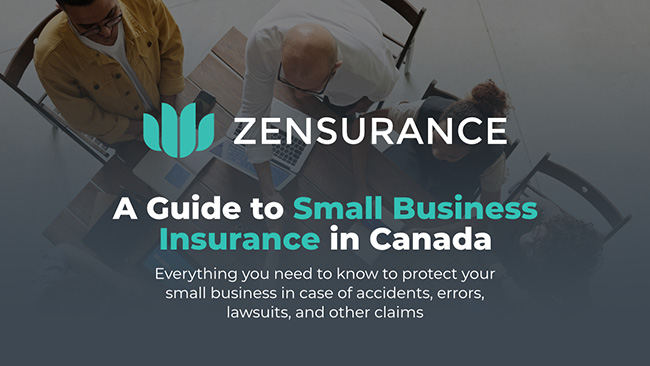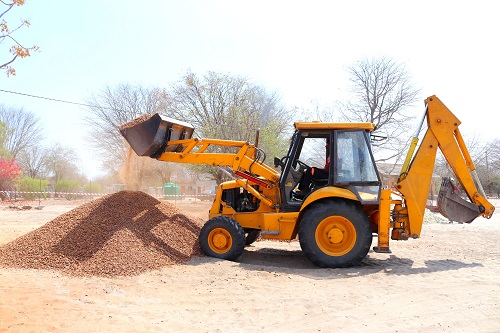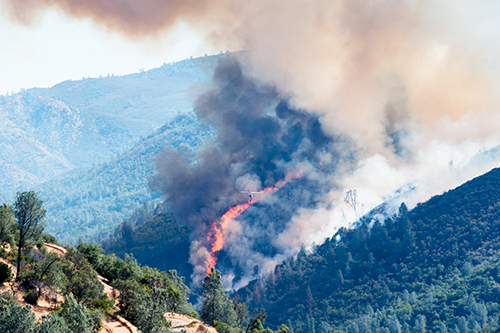Summer’s end nears, autumn approaches, and winter will soon arrive with all its teeth-chattering fury.
The Farmer’s Almanac’s winter outlook for 2023-2024 predicts much of Canada is in for a bitterly cold winter this year. Alberta, Saskatchewan, Manitoba, Newfoundland and Labrador, and western Ontario are expected to experience frigid temperatures and icy conditions. Moreover, the Great Lakes region is predicted to receive the most snow, and our coastal areas can expect significant wintry precipitation.
For snow removal contractors and snowplow operators, getting snow removal insurance for the coming season is underway. It’s wise to explore your options sooner rather than later since getting coverage has been a formidable challenge over the last several years. That’s because general liability insurance for the snow and ice removal business is considered high-risk. Therefore, there’s only so much capacity insurance companies have to provide policies insuring snow removal companies, and snow removal insurance premiums have risen notably over the past several years.

One reason insurance rates for snow removal businesses are climbing is due to the surge of slip-and-fall claims, lawsuits in recent years, and inflation.
The Insurance Bureau of Canada estimates commercial liability coverage claims that include slip-and-fall incidents on icy surfaces have increased by 108% between 2013 and 2020, rising from $2.4 billion to $5.1 billion. Furthermore, slip-and-fall accidents are among the most common accidents in Canada. Statistics Canada estimates 1.7 million falls occur annually, accounting for 40% of all injuries. At the same time, the Canadian Institute for Health Information says 8,800 fall-related injuries across the country result from people slipping on ice.
Download Our FREE Insurance Whitepaper
Learn everything you need to protect your small business.
Your email address will be used by Zensurance to provide latest news, offers and tips. You can unsubscribe at any time.

When signing snow removal contracts with contractors, property managers and landlords tend to deflect liability for slip-and-fall incidents on their properties to their snow removal company through a ‘hold harmless’ clause in their contracts. This means that the responsibility of slip-and-fall accidents is placed on snow removal companies to pay for the damages if someone slips, falls, and suffers an injury.
Other reasons for high snow removal premiums include a challenging economy, inflation, and interest rate hikes initiated by the Bank of Canada to tame inflation.
These factors, and our increasingly litigious society, are prompting many insurers to hike their rates to cover the number of claims they must address, or they’ll be forced to stop offering coverage.
How Much Does Snow Removal Insurance Cost in Canada?
What a snow removal insurance policy will cost you depends on several factors about your operations that insurance providers weigh. Those factors include:
- The size of your snowplow business. A larger snow removal company with multiple vehicles and equipment suggests you’ve got a significant customer list. More jobs equals more risk.
- Your annual revenue. Like the size of your business, the more your organization earns, the greater the risk of liability claims.
- Years of experience. The more experience you have as a snow removal contractor works in your favour versus someone starting a snow removal business.
- The location of your snow removal operations. Canada may be regarded as the land of ice and snow, but some regions experience more frequent and higher snowfall amounts than others. Therefore, if you operate in a municipality that gets dumped on regularly throughout the winter months, it is likely to increase your premium.
- The types of snow removal contracts you have. It’s not just how many customers you have but what kind of customers that is an influencing factor. For instance, the cost of insurance for providing snow and ice removal operations at residential properties like a condominium complex may cost as much as doing the same work for large, commercial properties, like a parking lot of a big box retail outlet or a midsized commercial property like coffee shop lots and drive-thrus.
- How many employees you have. The more employees you have, the greater the chance of an accident or a liability claim against you occurring.
- Your insurance claim history. If yours is a claims-free snow removal business for more than six years, you may be less of a risk to insurers, which may help keep your premium low. Once you have a claim, it can significantly impact your premium.
Different insurance companies charge different premiums. Generally, you can anticipate a premium starting at $1,250 per month for a basic commercial general liability policy with a $1 million coverage limit for a business with a truck and plow.
If you are a handyman or handyperson, and you shovel or use a snowplow on residential driveways and paths, then you might be able to get insurance for $250 per month.
What Liability Risks Do Snow Removal Contractors Face?
There are several liability risks snow removal contractors face, including:
- Slip and fall accidents that lead to third-party bodily injury claims
- Damage to your customers’ properties caused by the plows, snow blowers, and shovels you use
- Environmental damages arising from the use of road salt and de-icing chemicals that harm vegetation or contaminate water sources
- Traffic accidents in parking lots or on public or private roads while operating a snow removal plow
- Failing to fulfill contractual obligations with customers
- Operating a snow removal business without insurance or with inadequate coverage
What Does Snow Removal Liability Insurance Include?
Our brokers customize every insurance policy provided by Zensurance to meet the specific requirements of our clients. However, a typical snow removal insurance policy may include the following coverages:
- General liability insurance to cover third-party bodily injury or property damage claims
- Tools and equipment insurance to protect your transportable tools if damaged by fire, water, a natural disaster, vandalism or if they’re stolen
- Equipment breakdown insurance to pay for repair costs to your snow removal equipment because of mechanical or electrical malfunctions
- Commercial auto insurance to cover the cost of traffic accidents involving your business vehicles, including winter service vehicles and snowplows
- Legal expense insurance to pay to hire an experienced lawyer to manage typical business requirements like writing and reviewing customer contracts or covering the cost of retaining legal counsel if facing a lawsuit
6 Ways to Avoid Snow Removal Insurance Claims
Here are six ways to help keep your snow removal insurance premium as low as possible:
1. Document Your Work (Keeping Accurate Records)
Take before and after photos and videos of every snow removal job you do. Keep a logbook on hand to accurately detail your work and when.
2. Identify Potential Hazards Before Plowing
Identify, assess, and minimize potential dangers on the properties you’re clearing. Since slip-and-fall claims are common, strive to reduce the risk of them happening, particularly on properties or in areas such as public sidewalks and parking lots with significant pedestrian traffic.
3. Advise Your Clients
Preventing slip-and-fall injuries is paramount. Help your clients help you by working together to prioritize taking preventative measures on their properties. For example, provide them with a checklist of things to do to protect their customers and employees or residents that, such as ensuring employees wear appropriate footwear for winter conditions, provide adequate lighting and walkway markings in parking lots and sidewalks, and use secure mats indoors and clean up wet areas inside and place wet floor signs in those areas.
4. Maintain Your Vehicles and Equipment
Be proactive in performing necessary maintenance of all snowplow vehicles and equipment. Invest in a defensive driving program for snowplow operators. Also, store your vehicles and equipment in a secured compound to prevent the likelihood of theft or vandalism.
5. Hire Experienced Operators and Train Your Employees
Hire experienced snow removal operators when possible and train your employees on the equipment they’ll use, whether veterans or newcomers. Also, have employees take a defensive driving course for driving in winter weather, and perform auto experience checks on new drivers.
6. Get It in Writing
Consult a lawyer to help write clearly defined customer contracts to ensure you’re not exposing yourself to more liability risk than your insurer will accept.
How Snow Removal Contractors and Snow Removal Companies Can Protect Their Assets
Your best option for finding low-cost snow removal insurance quotes is to partner with a broker to shop the market to find the coverage you need from several insurers.
Zensurance has more than 50 Canadian insurance providers in our network, giving our brokers (and you) an edge in getting covered.
Fill out an online application to get a free quote. Our licensed brokers can advise you on what coverages to include in your policy and the coverage limits you’ll need to offset your business’s risks.
Related Posts
What Is Completed Operations Insurance for Contractors?
After completing a building or renovation project, what should a contractor or renovation expert do if a customer files a pricey third-party damage claim or lawsuit against them? Here’s how to protect your finances if it happens to you.
Is Your Small Business Ready for Wildfire Season?
Not only are wildfires becoming more ferocious and frequent, but the Canadian wildfire season also starts earlier now than in the past. See our tips to try to prevent wildfire damage to your business property.
What Type of Insurance Does a Vape Store Need?
Owning and running a vape shop has pros and cons, including adequately protecting your business and finances from the liability risks you face. Here’s what you need to know.








